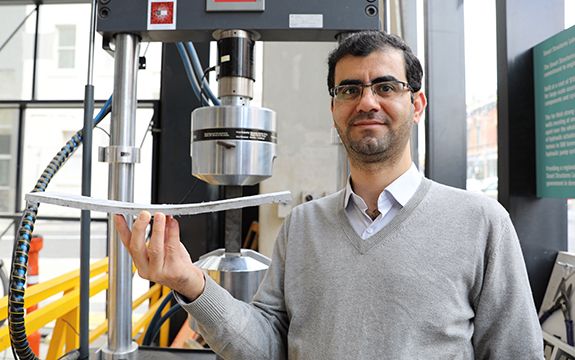
🏛️ A new bendable and cement-free concrete created to better withstand earthquakes
The product is 400 times more bendable than conventional concrete and far less polluting.
Share this story!
Researchers at the Swinburne University of Technology in Melbourne have created a new kind of concrete that is both eco-friendly and better at withstanding earthquakes and other impact disasters. The bendable concrete is also made out of waste material.
The most widely used material
“Concrete is the most widely used construction material in the world,” said ARC DECRA Fellow at Swinburne's Centre for Smart Infrastructure and Digital Construction, Dr. Behzad Nematollahi.
“In fact, it is the second-most consumed material by human beings after water. Its quality has a massive effect on the resilience of our infrastructures such as buildings, bridges, and tunnels.”
Traditional concrete is not only prone to shatter when being stretched or bent, but also has a huge carbon footprint due to calcination of limestone to produce its key ingredient, cement. By using industrial waste products, Dr Nematollahi and colleagues have done away with the need for concrete, making the product more sustainable.

“Production of this novel concrete requires about 36% less energy and emits up to 76% less carbon dioxide as compared to conventional bendable concrete made of cement,” said Dr. Nematollahi.
The novel material is made of industrial waste products such as fly ash, a by-product of coal-fired power stations. The inclusion of short polymeric fibers in this novel concrete allows it to sustain multiple hair-sized cracks when put under tension or bending and not break into pieces.
Natural disasters
In fact, it is able to bend when force is applied to it – meaning that buildings made from it will be much more likely to remain intact during earthquakes, hurricanes, projectile impacts, and blasts.
This makes it ideal for use in areas where natural disasters are common. “Building in areas vulnerable to that sort of natural disaster is one of the main uses that we can see for this material,” Dr. Nematollahi added.
“Our laboratory test results showed that this novel concrete is about 400-times more bendable than normal concrete, yet has similar strength.”
This is not only great news for disaster-prone areas, but it also great for the environment.
This story first appeared on Interesting Engineering